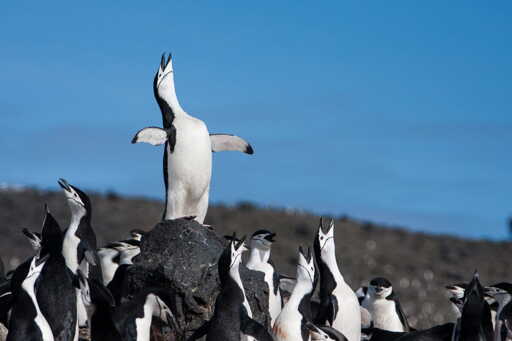All along the western Antarctic Peninsula, whales, penguins and seals in their millions depend on krill (Euphausia superba) throughout the year. In the most rapidly warming region on the continent, they are now facing an additional and unprecedented threat. For the first time in 15 years, industrial vessels may undertake increased and more concentrated fishing for krill in this region. The record catch limit was reached this past August, triggering an unparalleled early closure of the fishery. This change comes after the Commission for the Conservation of Antarctic Marine Living Resources (CCAMLR), the multilateral body responsible for conserving marine species in the Southern Ocean, allowed a critical conservation measure (CM 51-07) to lapse in 2024, removing precautionary regulations that previously distributed catches across the region to reduce direct competition between the fishery and krill-dependent predators. While this new scenario doesn’t technically break any rules, this may be precisely the problem. Fishing within catch limits may still risk adversely affecting krill-dependent predator populations. The cascading ecological consequences can be widespread, while the precautionary principles that guide CCAMLR are put to the test. Antarctic krill are the cornerstone species of the Southern Ocean; they are the primary food source for a suite of species and provide important contributions to the global carbon cycle. They are so important that they inspired a pioneering conservation mandate, the Convention for the Conservation of Antarctic Marine Living Resources (also CCAMLR). Unlike traditional fisheries that maximize harvest, the CCAMLR embedded the ecosystem-based approach in its foundational text…This article was originally published on Mongabay
From Conservation news via this RSS feed


